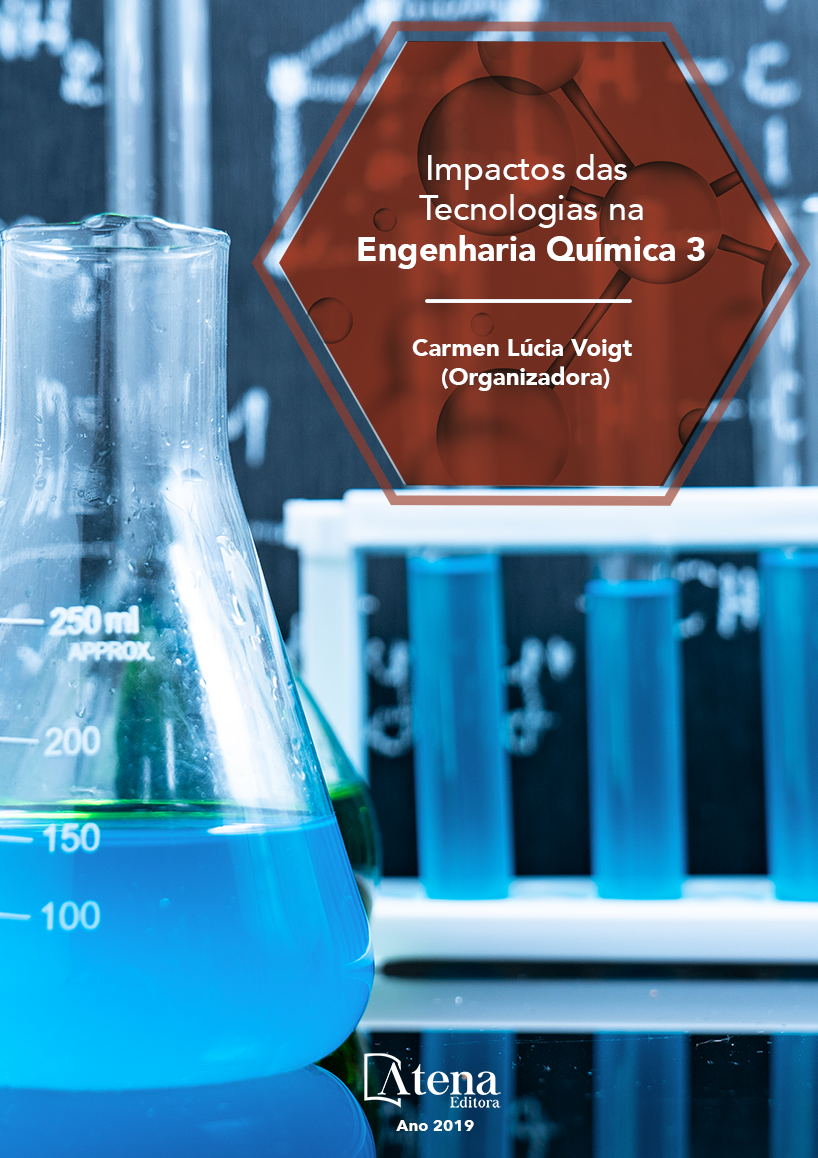
UTILIZAÇÃO DE RESÍDUOS PARA O TRATAMENTO DE EFLUENTES CONTENDO METAIS PESADOS
A utilização de biossorventes é uma
atraente alternativa para a resolução de alguns
dos problemas ambientais sofridos atualmente.
Neste trabalho estudou-se a adsorção de íons
cobre utilizando a farinha da casca de banana,
avaliando-se os efeitos do tempo de adsorção,
da massa e tipo de adsorvente através de
planejamento experimental. A farinha in natura
apresentou capacidade de remoção de íon
cobre significativa, podendo ser efetivo seu
uso sem pré-tratamento em efluentes com
concentrações baixas de Cu2+. Segundo os
resultados estatísticos, a porcentagem de
remoção de íon cobre variou de 37,1% a 98,6%
entre os experimentos. Os efeitos foram mais
significativos no aumento da porcentagem de
Cu2+ adsorvido, quando se utilizou a farinha
sob tratamento térmico e com excesso de
massa. Atingiu-se uma redução considerável
na concentração de íon cobre inicial em todos
os experimentos.
UTILIZAÇÃO DE RESÍDUOS PARA O TRATAMENTO DE EFLUENTES CONTENDO METAIS PESADOS
-
DOI: 10.22533/at.ed.3191901041
-
Palavras-chave: biossorventes; íons cobre; planejamento experimental; efluentes.
-
Keywords: biosorbents; copper ions; experimental design; effluents.
-
Abstract:
The use of biosorbents is an
attractive alternative for solving some of the
environmental problems suffered nowadays. In
this work the adsorption of copper ions using
banana peel flour was studied, evaluating the
effects of adsorption time, mass and type of
adsorbent through experimental design. The
in natura flour showed significant copper ion
removal capacity and its use can be effective
without pretreatment in effluents with low
concentrations of Cu2+. According to the statistical results, the percentage of copper
ion removal ranged from 37.1% to 98.6% between the experiments. The effects were
more significant in the increase of the percentage of Cu2+ adsorbed when the flour was
used under heat treatment and with excess mass. A considerable reduction in the initial
copper ion concentration was achieved in all experiments.
-
Número de páginas: 15
- Pedro Henrique Trindade Dias Cabral
- Roberta Resende Maciel da Silva
- Carla Torres Dias
- José Renato Guimarães
- Ana Paula Fonseca Maia de Urzedo
- Kaíque Souza Gonçalves Cordeiro Oliveira


